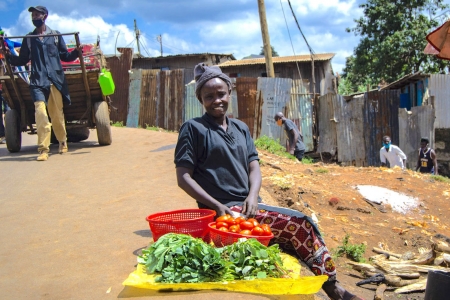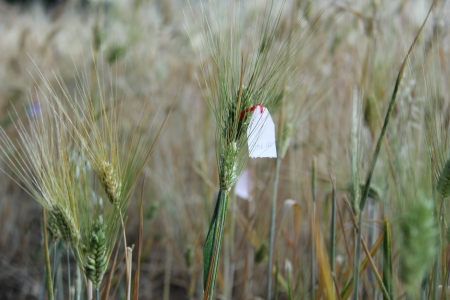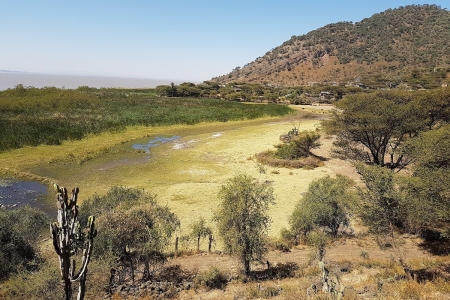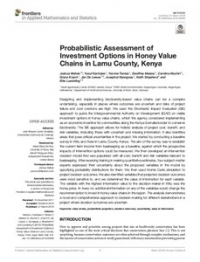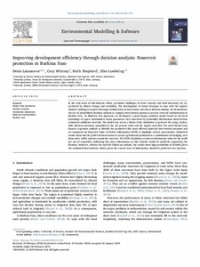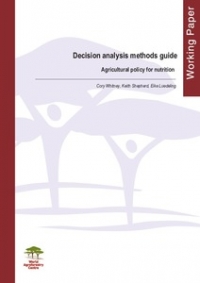Among East Africa’s biodiversity hotspots is the Desa’a forest, which borders Tigray and Afar in Northern Ethiopia. The forest has become a priority area for conservation, as years of conflict, deforestation and mismanagement have left it highly degraded. But new sets of tools bring an opportunity to reverse these trends and restore and protect this important natural wonder.
WeForest, a nonprofit organization with the goal to restore 25,000 ha of forests around the world, is working in the Desa’a to maintain the remaining 10% of dense forest cover while working with the local communities to restore the surrounding buffer zones and increase forest cover.
The CGIAR Research Program on Water, Land and Ecosystems (WLE), through partners at the World Agroforestry Center (ICRAF), are using Decision Analysis (DA) to help the WeForest team determine how best to prioritize their work going forward. It’s a term we hear often, but what does DA actually look like on the ground? Thrive talked to Yvonne Tamba and Joshua Wafula from the Land Health Decisions team to learn more.
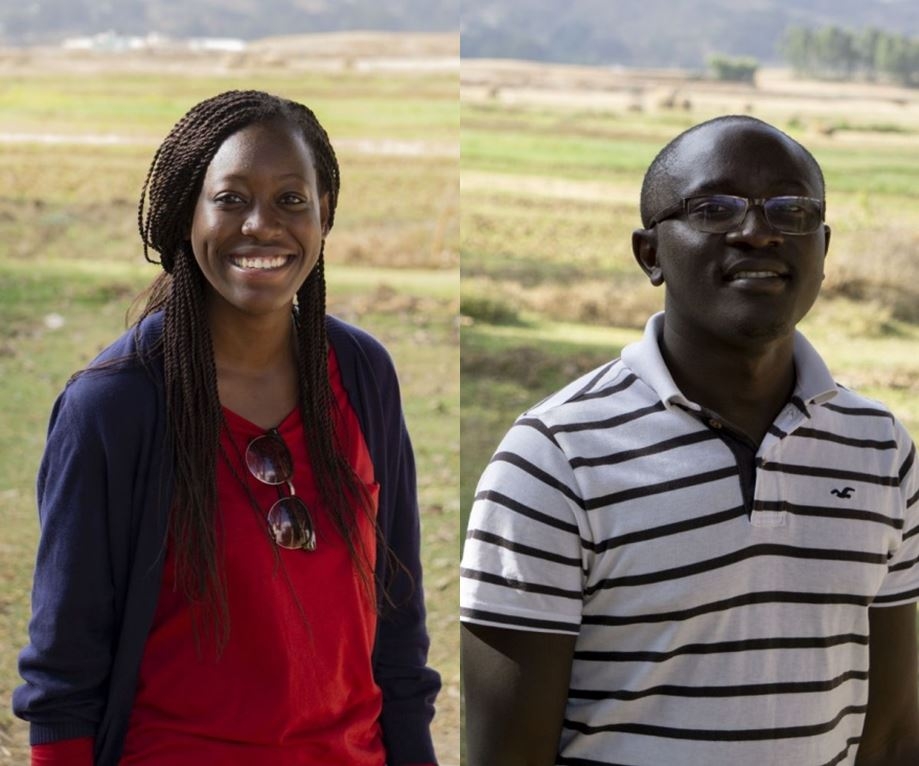
Thrive: What is Decision Analysis (DA) and how is it used?
Yvonne Tamba: DA is a procedure for discriminating between suitable courses of action, considering all the costs, benefits and risks. Applying DA to a project initially involves conversations with stakeholders to understand their desired outcomes and constraints. With the decision makers, we work on identifying the interventions that they are considering and defining the decision that the analysis will be based on.
Joshua Wafula: In this case, the decision makers are the WeForest team and the community members who are implementing the restoration efforts, as well as other government and non government actors. WeForest has a management plan where they analyzed the existing forest structure and successions, socio-economic status, potentials, and business plans for possible forest friendly development activities, but they are still trying to figure out the restoration investment risks. So we are using their plan to try to model the potential outcomes of their interventions and see if the designs can be tweaked to improve the benefits of future investments.
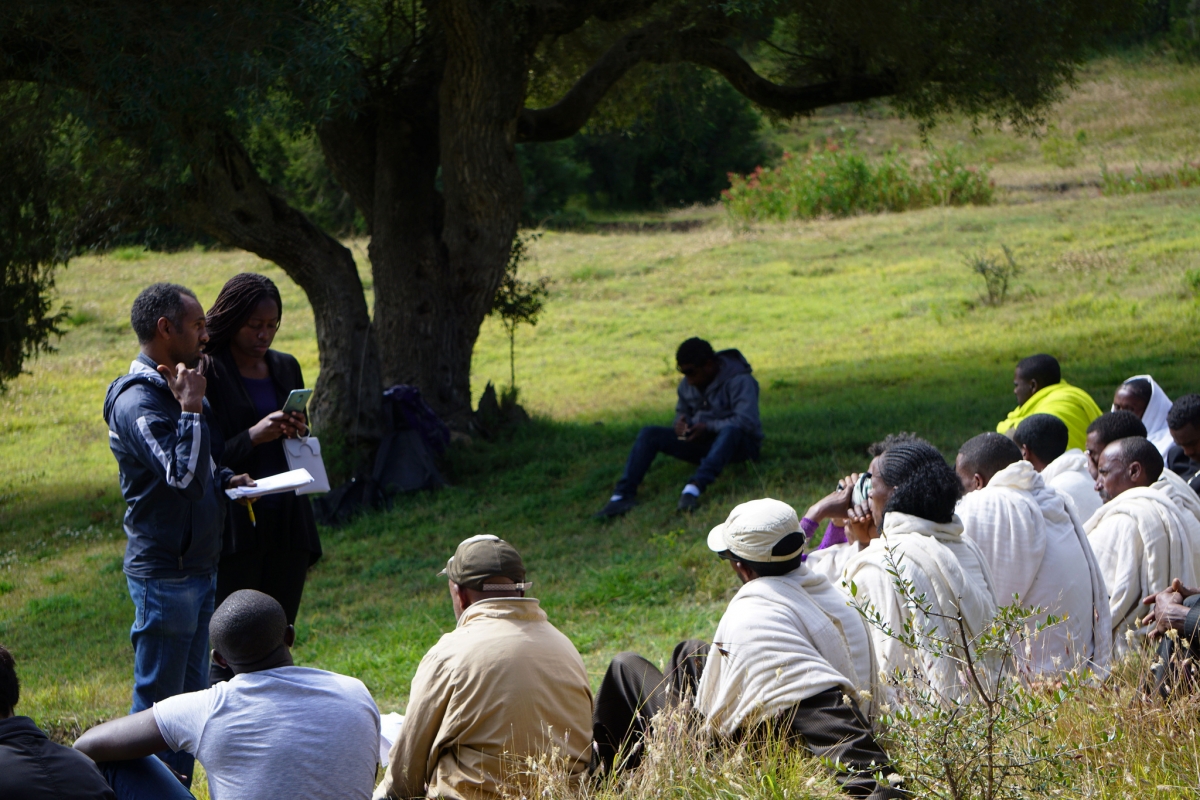
YT: Once the decision is framed, then DA is a process of collecting qualitative and quantitative information through discussions and interviews, and available literature. Since we tend to work with researchers who are working on subjects that, as modelers, we are not entirely familiar with, the goal is to get stakeholders to contextualize their decisions and tell us what they think is going on. Then we can use that information to build a simulation of what is planned on the ground and the likely outcome of alternative plans.
And the result will be a ranking of the possible interventions, based on how much benefit there will be from each?
YT: If you’re implementing DA before an intervention is selected, it can definitely be used to prioritize alternatives and choose the option that will maximize desired outcomes and reduce risks. DA provides insights that help decision-makers improve their plans before they are implemented.
In some cases, however, our analysis comes in where project activities have already begun and our contribution at this stage is more to do with risk analysis. The primary goal is to project what the most likely outcomes will be and what factors are most likely to affect or impede the project achieving the results that they want to achieve. Recently, we were in Machakos County, Kenya looking at the impact of investments on site-specific fertilizer recommendations on farm productivity, in a program funded by the Bill and Melinda Gates Foundation. Since there was no prioritization of the activities involved, we focused on carrying out an analysis of the returns on investments in fertilizer at the farm level, as well as the associated risks. Our results highlighted socioeconomic variables that would affect adoption of fertilizer recommendations and found that the farmers’ attitude to fertilizer use and financial capacity to sustain input use were the most risky socioeconomic factors affecting successful implementation of the program.
Value of information analysis, which identifies what further information would have value in reducing decision uncertainty, is a big part of it. So it ends up being more about supporting planning, giving information on where the biggest research gaps are and what measurements you should fund. For instance, we provided decision support to the Intergovernmental Authority on Development (IGAD), who were considering investing in honey value chain development for communities along the Kenya-Somalia border to conserve biodiversity. We found that In Witu Lamu County Kenya, better information on honey price would have a bearing on whether IGAD should go ahead and invest in that region. That information could be gathered at very little cost but has a large impact on the decision.
JW: In Desa’a forest, we are trying to contextualize what the community considers to be important, since they are going to be the ones implementing. By having them and WeForest share information, we can make sure that the information we put into the model is realistic. The community members are the ones who are best able to identify their risks, which you may not get from the decision makers alone. We are also currently working with farmers from Kakamega County, Kenya, to identify the impact of fertilizer subsidies on smallholder farmer incomes. In this analysis, farmers have provided critical information on existing cropping systems, the various costs, benefits and risks associated with these systems and farmer expectations if fertilizer costs were to be subsidized. This information cannot be found in existing data. This has helped a lot in the framing of the decision question with the decision-makers and constructing realistic decision models.
So once you have all of this quantitative data, you said you assign values to it and put it through a model – how does that work?
YT: You take all the quantitative data and qualitative information you collect through the interviews and make a model of the pathways to impact. For instance, you can say that an activity will provide income, but it’s more meaningful to try to understand how much income will be generated in a given period for how many people or households – it involves disaggregating a single variable into its constituent parts, and the parts are usually very quantifiable.
What makes this model particularly applicable to this landscape restoration case?
YT: The WeForest team is taking an adaptive monitoring approach, with the idea that, as lessons are learned, the program will adjust accordingly. Through DA, we will be in a position to tell them what risks and possibilities they might need to be aware of, and what they should monitor closely. For instance, with the fertilizer recommendation study in Machakos that we mentioned earlier, the recommendation was to include a strong training and awareness component in the planning of such a program that would counter the farmers’ negative attitudes to fertilizer use. Therefore, we hope the risk analysis component will be quite significant for the WeForest case.
JW: The WeForest restoration efforts have also gained a lot of interest from different organizations. Value of information analysis will help a lot in prioritizing the research gaps. This will in turn help to identify partners that will better meet the need of narrowing the emerging knowledge gaps.
So once the model is made, you verify it with the stakeholders who are involved?
YT: It’s a participatory approach so the model has to be approved by the stakeholders. During our workshop, we will show the community what we have in mind and encourage them to take ownership of it and change the parts that aren’t correct, because really, it’s their model, and their project. So they have to agree that the model best represents their situation. We are successful when the stakeholders gain new insights and achieve clearer thinking on how their actions will achieve their goals.
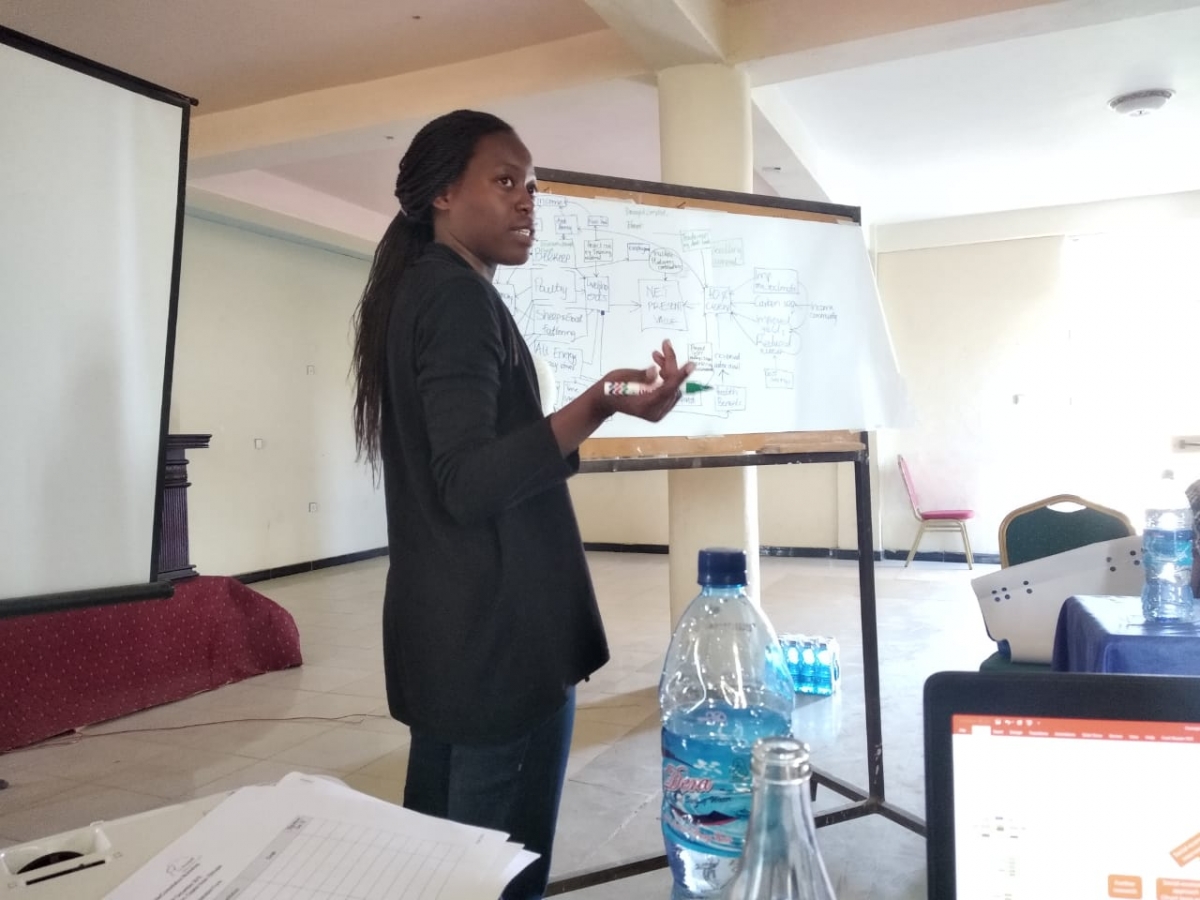
JW: We will develop a conceptual model based on the interventions by the WeForest team and then engage the community representatives and subject matter experts to customize the model to reflect what they see as the reality on the ground. The aim will be to try and link the team’s short-term goal of providing alternatives sources of income for communities in Desa’a to conserve the forest, with the long term-goal of restoring the forest. For example, gully restoration efforts, which involve development of gabions and planting of high value trees and grasses along river banks, will reduce soil erosion and flooding, and improve water availability. Immediate benefits would be improved yields and availability of fodder for livestock. This will eventually contribute to the general increase in forest cover in the long term. A prominent risk for this intervention would be the survival rate of tree seedlings.
I think for us, what will be very exciting is how we will develop the ecosystem services model. For instance, looking at how the community could earn from carbon credits.
YT: That’s part of what’s really interesting about fieldwork, how it really provides insights. For instance, before we came, I had a bit of a panic moment when I was thinking about how to value ecosystem services with the stakeholders. I was going over all of the possible methods and how we were going to get the community to agree to them. But as soon as we came here and started talking to people, someone mentioned a carbon credits program, and this provided a context and entry point. It is that joint insight that add values to decision making. In this case, it is a very straightforward way to set up benefits and value for the community.
JW: Yes, valuation of ecosystem services can be quite complex, but once you clearly define what really needs to be measured to make a good decision, you already start having a rough understanding of how ecosystem services work. From this, it is easy to identify the relevant variables to populate ecosystem services models.
I can’t imagine trying to do this process remotely.
YT: It’s the worst. The models are much harder to compile if you have incomplete information. Seeing the context makes a huge difference – you can read as many papers as you want, but unless you go and see the context, you won’t really understand what is going on. Having said that, simply guiding people through the principles of sound decision making can have a big impact.



